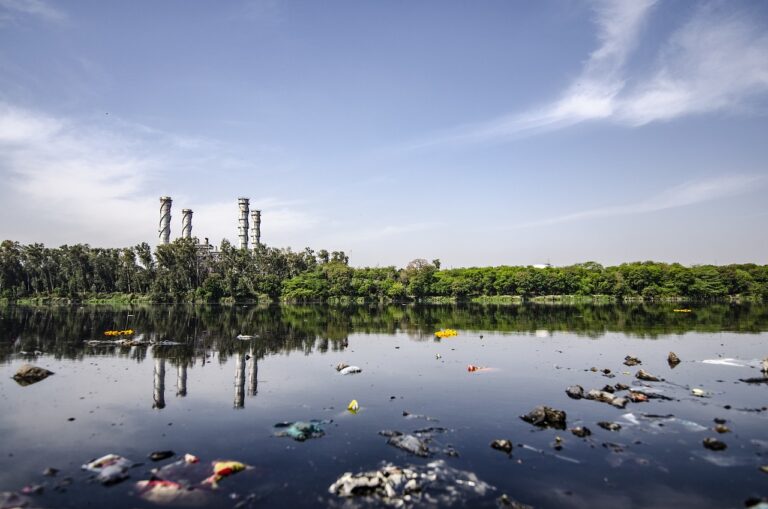Waste Water Systems
Sewage Treatment Plants
Sewage treatment plants (STPs), also known as wastewater treatment plants, are facilities designed to treat and process sewage or wastewater generated from residential, commercial, and industrial sources. The goal of these plants is to remove pollutants, contaminants, and organic matter from the wastewater before it is released back into the environment or reused for non-potable purposes.
Process typically involves several stages
- Preliminary Treatment: Large objects, debris, and solids are removed using screens and grit chambers to prevent damage to downstream equipment.
- Primary Treatment: The wastewater is settled in large tanks, allowing heavier solids to settle at the bottom as sludge, while greases and oils rise to the top. The clarified water between these layers is sent for further treatment.
- Secondary Treatment: This stage uses biological processes to further break down dissolved and suspended organic matter. Aerobic bacteria or other microorganisms are used to consume these materials, transforming them into biomass and gases like carbon dioxide.
- Tertiary Treatment: In some cases, an additional treatment step is used to further polish the water quality. This can include processes like filtration, chemical treatment, and advanced oxidation to remove remaining impurities.
- Sludge Treatment: The sludge generated during the process is treated separately. It may undergo further processing like anaerobic digestion, dewatering, and drying to reduce its volume and stabilize it before disposal or beneficial use.
Sewage Treatment Plants Several Stages Are
-
Preliminary Treatment
Similar to sewage treatment plants, this stage involves removing large solids, debris, and oil/grease from the effluent.
-
Primary Treatment
The effluent is allowed to settle, and solids and heavier particles settle out as sludge. This primary treatment reduces the load of suspended solids and organic matter.
-
Secondary Treatment
Biological processes are used to break down and consume organic pollutants present in the effluent. Aerobic or anaerobic bacteria are employed to degrade the contaminants.
-
Tertiary Treatment
Depending on the discharge standards and the specific pollutants, additional treatment steps might be required. These can include processes like chemical coagulation, filtration, advanced oxidation, and more.
-
Sludge Management
Similar to sewage treatment, the sludge generated in ETPs needs proper management. It’s often dewatered, treated, and potentially used as a fertilizer or disposed of safely.

Effluent Treatment Plants
Effluent Treatment Plants (ETPs) are specialized facilities designed to treat and process industrial wastewater or effluent before it is discharged into the environment or municipal sewage systems. These plants are essential for industries to adhere to environmental regulations and minimize the impact of their operations on water resources. The treatment process in an ETP varies depending on the type of pollutants present in the industrial effluent.
Effluent Treatment Plants Key Stages Are
-
Preliminary Treatment
Large objects, debris, and solids are removed using screens and grit chambers to prevent damage to downstream equipment.
-
Primary Treatment
The wastewater is settled in large tanks, allowing heavier solids to settle at the bottom as sludge, while greases and oils rise to the top. The clarified water between these layers is sent for further treatment.
-
Secondary Treatment
This stage uses biological processes to further break down dissolved and suspended organic matter. Aerobic bacteria or other microorganisms are used to consume these materials, transforming them into biomass and gases like carbon dioxide.
-
Tertiary Treatment
In some cases, an additional treatment step is used to further polish the water quality. This can include processes like filtration, chemical treatment, and advanced oxidation to remove remaining impurities.
-
Sludge Treatment
The sludge generated during the process is treated separately. It may undergo further processing like anaerobic digestion, dewatering, and drying to reduce its volume and stabilize it before disposal or beneficial use.

Join Us in Our Mission & Vision
Become a part of our journey to get relived from your problems, create experiences, achieve goals. Whether you're an individual looking for product/service or a business seeking product/service, we're here to make a difference together.
Effluent Treatment Plants
Effluent Treatment Plants (ETPs) are specialized facilities designed to treat and process industrial wastewater or effluent before it is discharged into the environment or municipal sewage systems. These plants are essential for industries to adhere to environmental regulations and minimize the impact of their operations on water resources. The treatment process in an ETP varies depending on the type of pollutants present in the industrial effluent.
However, it generally includes several key stages
- Preliminary Treatment: Similar to sewage treatment plants, this stage involves removing large solids, debris, and oil/grease from the effluent.
- Primary Treatment: The effluent is allowed to settle, and solids and heavier particles settle out as sludge. This primary treatment reduces the load of suspended solids and organic matter.
- Secondary Treatment: Biological processes are used to break down and consume organic pollutants present in the effluent. Aerobic or anaerobic bacteria are employed to degrade the contaminants.
- Tertiary Treatment: Depending on the discharge standards and the specific pollutants, additional treatment steps might be required. These can include processes like chemical coagulation, filtration, advanced oxidation, and more.
- Sludge Management: Similar to sewage treatment, the sludge generated in ETPs needs proper management. It’s often dewatered, treated, and potentially used as a fertilizer or disposed of safely.
Effluent Treatment Plants
Effluent Treatment Plants (ETPs) are specialized facilities designed to treat and process industrial wastewater or effluent before it is discharged into the environment or municipal sewage systems. These plants are essential for industries to adhere to environmental regulations and minimize the impact of their operations on water resources. The treatment process in an ETP varies depending on the type of pollutants present in the industrial effluent.
However, it generally includes several key stages
- Preliminary Treatment: Similar to sewage treatment plants, this stage involves removing large solids, debris, and oil/grease from the effluent.
- Primary Treatment: The effluent is allowed to settle, and solids and heavier particles settle out as sludge. This primary treatment reduces the load of suspended solids and organic matter.
- Secondary Treatment: Biological processes are used to break down and consume organic pollutants present in the effluent. Aerobic or anaerobic bacteria are employed to degrade the contaminants.
- Tertiary Treatment: Depending on the discharge standards and the specific pollutants, additional treatment steps might be required. These can include processes like chemical coagulation, filtration, advanced oxidation, and more.
- Sludge Management: Similar to sewage treatment, the sludge generated in ETPs needs proper management. It’s often dewatered, treated, and potentially used as a fertilizer or disposed of safely.

Sewage Treatment plants
Sewage treatment plants (STPs), also known as wastewater treatment plants, are facilities designed to treat and process sewage or wastewater generated from residential, commercial, and industrial sources. The goal of these plants is to remove pollutants, contaminants, and organic matter from the wastewater before it is released back into the environment or reused for non-potable purposes. The sewage treatment process typically involves several stages:

